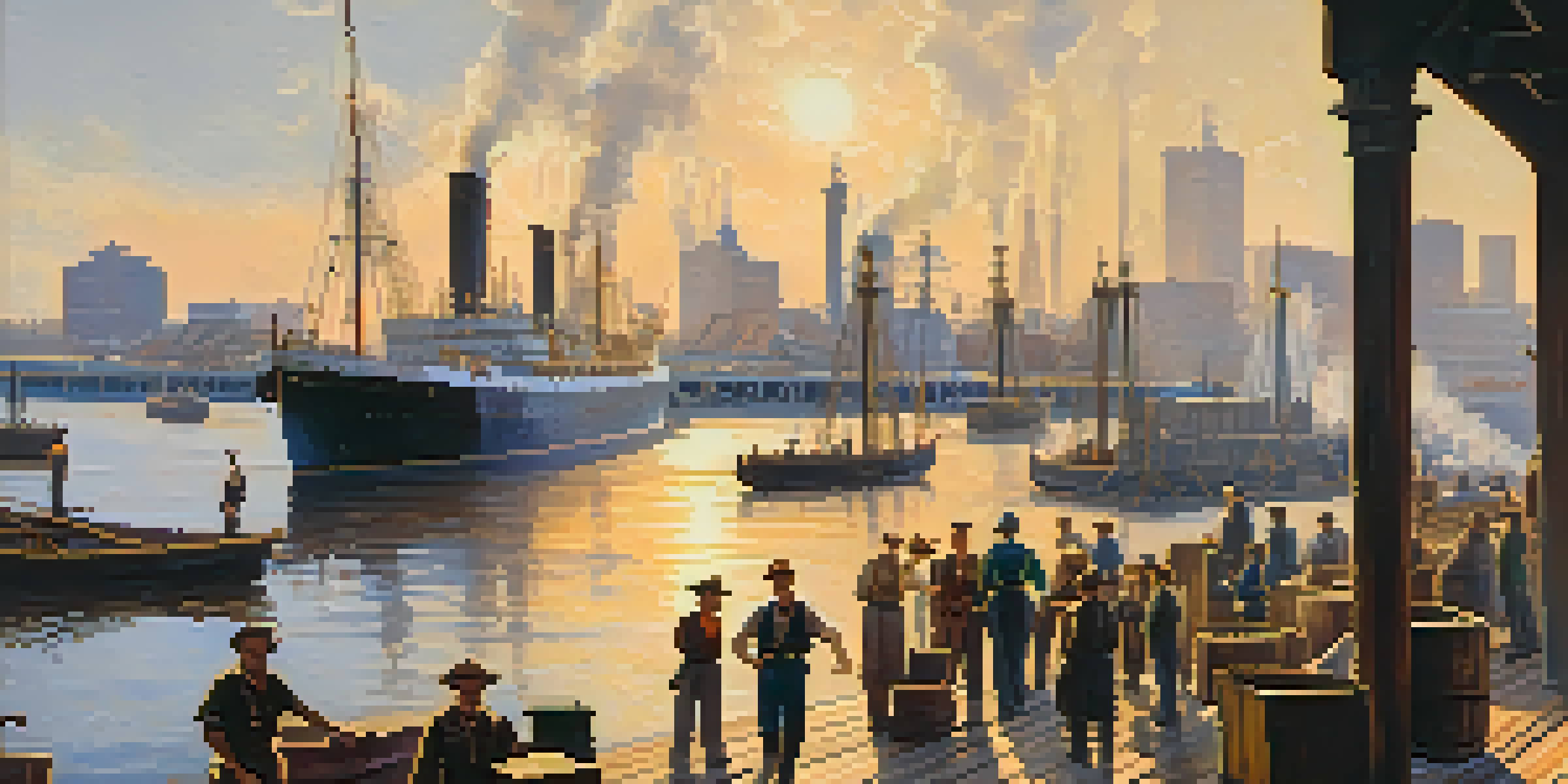Jacksonville's Development Through the 20th Century

Early 20th Century: A Flourishing Port City
In the early 1900s, Jacksonville emerged as a bustling port city, benefiting from its strategic location along the St. Johns River. The city's economy thrived with the growth of shipping and trade, attracting businesses and residents alike. Notably, the establishment of railroads further connected Jacksonville to other major cities, solidifying its role as a transportation hub. This vibrant economic environment laid the groundwork for future developments in the decades to come.
The Impact of World War II on Jacksonville
World War II brought significant changes to Jacksonville, as the city became a vital military base. The establishment of naval facilities, such as Naval Station Mayport and the Jacksonville Naval Air Station, led to an influx of military personnel and their families. This population boom stimulated local businesses and resulted in infrastructure improvements, including roads and housing. The city's identity began to shift as it adapted to the needs of its growing military community.
Jacksonville's Growth as a Port City
In the early 20th century, Jacksonville thrived economically as a bustling port city and transportation hub.
Post-War Boom and Suburban Expansion
After the war, Jacksonville experienced a population explosion, prompting the development of suburban neighborhoods. Families flocked to the area, drawn by affordable housing and the promise of a better quality of life. This suburban sprawl was characterized by the construction of shopping centers, schools, and parks, all of which catered to the needs of the burgeoning population. The shift from an urban-centric city to a suburban landscape marked a significant transformation in Jacksonville's character.
Civil Rights Movement: A City in Transition
The 1960s brought the Civil Rights Movement to Jacksonville, challenging the status quo and pushing for social change. Activists worked tirelessly to dismantle segregation and promote equality, leading to significant protests and marches. The city's cultural landscape began to shift as diverse communities united for justice and representation. This era of activism not only altered the social fabric of Jacksonville but also influenced its political climate for years to come.
Impact of WWII on City Dynamics
World War II transformed Jacksonville into a vital military base, significantly boosting its population and infrastructure.
Economic Diversification in the Late 20th Century
As the century progressed, Jacksonville recognized the need for economic diversification beyond its traditional industries. Efforts were made to attract new businesses, particularly in sectors like finance, healthcare, and technology. The establishment of the Jacksonville Economic Development Commission played a crucial role in fostering a favorable business environment. This diversification helped stabilize the local economy and provided job opportunities for the growing population.
Cultural Renaissance: Arts and Entertainment
The late 20th century saw a cultural renaissance in Jacksonville, with a renewed focus on arts and entertainment. The city invested in cultural institutions such as the Museum of Contemporary Art and the Jacksonville Symphony Orchestra, enhancing its appeal as a cultural destination. Festivals, concerts, and art events became more common, fostering a sense of community and pride among residents. This artistic revival not only enriched local culture but also attracted tourists and new residents.
Cultural and Economic Diversification
Late 20th century initiatives in arts, entertainment, and business diversification revitalized Jacksonville's cultural scene and economy.
Modern Developments and Urban Renewal
Entering the 21st century, Jacksonville underwent significant urban renewal projects aimed at revitalizing its downtown area. Initiatives included the development of the Jacksonville Landing, a waterfront shopping and entertainment complex, and the revitalization of historic neighborhoods. These projects aimed to attract residents back to the urban core while enhancing the city's appeal as a vibrant place to live and work. The commitment to modernization reflects Jacksonville's adaptability and forward-thinking spirit.
A Bright Future: Jacksonville Today and Beyond
Today, Jacksonville stands as a dynamic city that continues to embrace growth and change. With a diverse economy, rich cultural scene, and a commitment to innovation, the city is poised for a bright future. Community initiatives focused on sustainability and inclusivity show that Jacksonville is not just looking back at its history but also forward to its potential. As it navigates the challenges and opportunities of the 21st century, Jacksonville remains a city of promise and possibility.